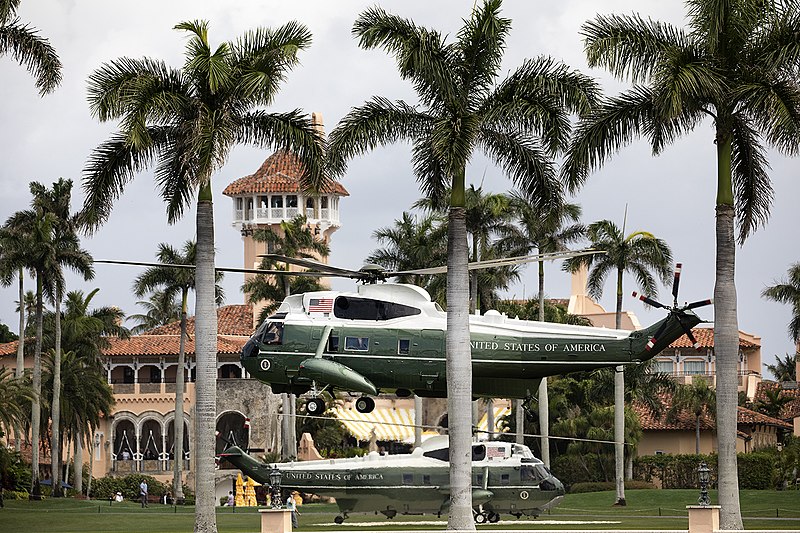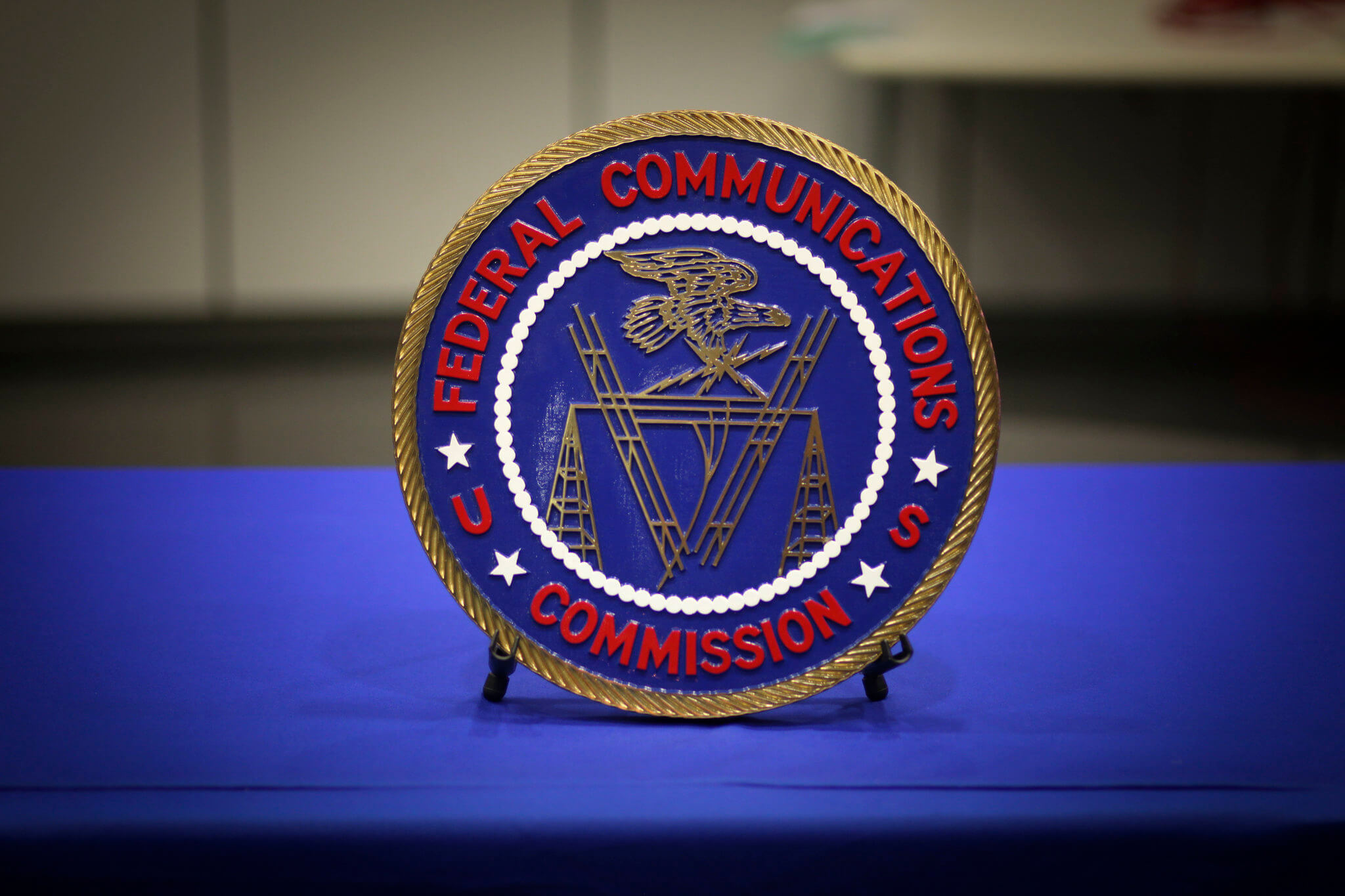What Did We Learn from the Mar-a-Lago Search Warrant Affidavit?
While the most important details remain redacted, the unsealed affidavit still sheds a bit more light on the Justice Department’s case.

Published by The Lawfare Institute
in Cooperation With

More than two weeks have passed since the FBI searched former President Donald Trump’s Mar-a-Lago estate and removed an array of classified documents and presidential records that it maintains were being unlawfully held on the premises.
Since then, the public has received a steady stream of new information about the investigation from both the media and the court system itself. Just days after the Aug. 8 search, Magistrate Judge Bruce Reinhardt of the U.S. District Court for the Southern District of Florida unsealed the search warrant he had authorized, along with an inventory of seized materials and related receipts.
The Justice Department and Trump’s attorneys have since agreed to release a number of other related documents as well. Combined with media reports, these documents have gradually brought more and more of the Mar-a-Lago investigation into focus, even if major aspects of it remain obscured.
One document, however, has remained beyond the public’s reach, precisely because it would provide the clearest picture to date of what exactly Trump and his associates at Mar-a-Lago are suspected of having done: the affidavit that the FBI included as part of its application for the search warrant, which outlines the government’s case for probable cause. While media organizations have petitioned the court for its release, the Justice Department has opposed their efforts on the grounds that disclosure would compromise its investigation. For his part, Trump has publicly said he wants the document released but has thus far refused to file anything in support of actually making this happen.
On Aug. 18, Reinhardt ruled that, despite the government’s valid concerns with disclosure, the public interest demanded that he not keep the entire affidavit under seal. He instructed the Justice Department to produce a set of recommended redactions, which the department did several days later. Earlier this week, he accepted its proposed redactions as sufficiently “narrowly tailored” in a brief ruling and indicated that an unsealed and redacted version of the affidavit would be posted on the court’s docket at noon on Friday.
This left tens of thousands of journalists and other observers eagerly hitting the reload button on their browsers while connected to the court’s online docket at midday yesterday. When the clock hit noon, the system almost immediately crashed under the pressure. Once it recovered, however, and access was finally restored, the public finally got its first glimpse of what is perhaps the biggest piece of the Mar-a-Lago puzzle to date–only it wasn’t what many had been hoping for.
The first substantive document to be unsealed and posted on the court’s docket was not the affidavit itself, but a memorandum of law that the Justice Department filed with the court in order to justify its redactions to the affidavit. A related government motion explained that the government intended to unseal the memorandum (which is itself partially redacted) “at the appropriate time” in line with “the principle that limitations on public access to judicial proceedings should be ‘narrowly tailored’”—a step the Justice Department appears to have taken to ensure that the memorandum would be released at the same time as the affidavit in order to spell out why it’s still withholding some of the details of its investigation.
The memorandum begins by rehashing the procedural background that led to the release of the affidavit, including Reinhardt’s Aug. 18 finding that, while unsealing the affidavit could harm various legitimate interests, this did not justify keeping “‘the entire Affidavit under seal[.]’” From there, it lays out five different arguments as to why parts of the affidavit had to be redacted before it could be publicly released. Several are typical of the kinds of arguments one would expect the Justice Department to make in similar cases, including that certain disclosures might reveal grand jury information, give the defendants or other interested parties a roadmap of the government’s investigation, or endanger law enforcement personnel by revealing their identities.
Two of the justifications offered, however, reflect more particular aspects of this specific case.
First is the government’s argument that redactions are necessary to “protect the identity of witnesses” and “ensure their safety.” While this argument is not unusual in and of itself, the memorandum cites Reinhardt’s own prior finding that “‘it is likely that even witnesses who are not expressly named in this Affidavit would be quickly and broadly identified over social media and other communication channels, which could lead to them being harassed and intimidated’”—or even, the memorandum adds, threatened with violence.
In other words, in the government’s (and apparently Reinhardt’s) view, the high-profile nature of this case—and the immense hostility that some members of the public feel towards it—dramatically increases the potential risk to witnesses and weighs even more strongly against disclosure of information that could lead to their identification. Moreover, the memorandum notes, such threats “would almost certainly chill other potential witnesses from coming forward” and thereby hamper the investigation. As evidence, the brief points to the “repeated threats of violence from members of the public” received by FBI agents who have been publicly identified as being involved in the investigation.
Another important observation on this point: The memorandum repeatedly uses the plural to refer to the government’s witnesses whose evidence formed the basis for its showing of probable cause for the warrant. This is almost certainly signaling that this is not a situation in which only a single witness has come forward.
The memorandum also argues that certain redactions are necessary to protect the privacy and “reputational interests” of the individuals who are being investigated. In doing so, the memorandum acknowledges that former President Trump has “spoken publicly about this investigation and has said in a public statement that he wishes for the affidavit to be disclosed in its entirety[,]” confirming that he is among the people being investigated. But it also notes that Trump has not filed any actual pleadings in support of efforts to have the affidavit unsealed, leaving his actual preferences unclear. While it does not say as much in the memorandum, the Justice Department’s redactions in the affidavit withhold nearly all information about Trump’s conduct, suggesting that both the department and Reinhardt ultimately declined to take Trump’s public claims that he supports disclosure as a waiver of his privacy rights, at least absent more clear follow-through on his part.
The affidavit itself was unsealed and posted on the court’s docket just a few minutes later. Attested to by an unnamed special agent from the FBI’s Washington Field Office, the affidavit clocks in at 38 pages in length. But more than 150 lines of it are at least partially redacted, underscoring the extent to which the court appears to have been persuaded by the Justice Department’s arguments against public disclosure.
Predictably, the most heavily redacted portions of the affidavit appear to include those that deal most directly with the conduct of former President Trump and others surrounding the handling of the sensitive materials at Mar-a-Lago. But despite the substantial redactions, the affidavit does give a few new small insights into the case the Justice Department appears to be building.
After some brief background, the search warrant begins with an entirely unredacted overview of relevant legal authorities, including relevant parts of the Presidential Records Act and the three provisions of criminal law that the FBI’s argument for probable cause was premised on: 18 U.S.C. § 793, a part of the Espionage Act that deals with the mishandling of “national defense information”; 18 U.S.C. § 1519, a records-related obstruction statute; and 18 U.S.C. § 2071, which deals with the mishandling of public records.
This itself isn’t new information, as the search warrant previously disclosed that these three provisions were the ones for which the magistrate judge found probable cause. But none of the previously released documents had clearly distinguished between the various subsections of § 793, several of which might be relevant. The affidavit, however, makes clear that the FBI is basing its claim of probable cause on § 793(e), a subsection that relates to the mishandling of national defense information by individuals not authorized to possess them in the first place. This confirms that the FBI’s investigation is focused on individuals that, in its view, were not authorized to have the information at issue—including, potentially, former President Trump.
The affiant also provided a lengthy overview of various designations applied to documents containing different types of classified information, including HCS (Human Intelligence Control System), FISA (Foreign Intelligence Surveillance Act), ORCON (Originator Controlled), NOFORN (Not Releasable to Foreign Nationals/Governments/U.S. Citizens), and SI (Special Intelligence). These designations identify some of the most sensitive classified information held by the government, including information originating with (and that might disclose the identities of) human sources and highly sensitive surveillance information. Their inclusion here serves as a bit of foreshadowing, as the affidavit later suggests that each is likely to be among the classified records the affiant believes are at Mar-a-Lago.
Notably absent, however, is any discussion of statutory provisions that protect and punish the mishandling of U.S. nuclear secrets. Nor are the “Restricted Data” and “Formerly Restricted Data” designations associated with such information among those listed. One would expect both to have been included in this section had the FBI believed there was probable cause that these sorts of nuclear secrets were among the records held at Mar-a-Lago. The fact that they do not appear in the affidavit may be an indication that such nuclear secrets may not, in fact, be at issue, despite media reports to the contrary. Or it may simply indicate that the FBI was not confident enough to include them in its initial application for a search warrant—particularly as such information may be separately classified as well.
From there, the affidavit lays out the facts that, in the FBI and the Justice Department’s view, support its case for probable cause. Most of this section is redacted, and those small portions that are not largely confirm information that has already been revealed in media reports. But a handful provide some new, previously undisclosed details.
The affidavit begins by confirming that the National Archives and Records Administration (NARA) requested that former President Trump and his staff return various presidential records that had been improperly moved to Mar-a-Lago as early as May 2021. This ultimately resulted in the return of 15 boxes of materials to the NARA in or around December 2021. Upon inspection, the NARA found that these materials included “‘a lot of classified records[,]’” some of which “‘were unfolded, intermixed with other records, and otherwise unproperly [sic] identified.’” This is what ultimately led the NARA to make a referral to the FBI in February 2022, initiating the FBI’s investigation.
One particularly striking unredacted paragraph outlines what the FBI found when it conducted its own preliminary review of the 15 boxes in May 2022:
[FBI agents] identified documents with classification markings in fourteen of the [fifteen boxes]. A preliminary triage of the documents with classification markings revealed the following approximate numbers: 184 unique documents bearing classification markings, including 67 documents marked as CONFIDENTIAL, 92 documents marked as SECRET, and 25 documents marked as TOP SECRET. Further, the FBI agents observed markings reflecting the following compartments/dissemination controls: [HUMINT Control System] HCS, [Foreign Intelligence Surveillance Act] FISA, [Originator Controlled] ORCON, [Not Releasable to Foreign Nationals/Governments/U.S. Citizens] NOFORN, and [Special Intelligence] SI.
This revelation appears to be central to the FBI’s belief that there were still classified documents among whatever records Trump was still retaining at Mar-a-Lago.
A few pages later, the affidavit describes a May 25 letter from one of Trump’s attorneys to the FBI that argued, in the affidavit’s words, that “a President has absolute authority to declassify documents.” (This letter is discussed in more detail below.) The affiant also acknowledges awareness of a May 5 Breitbart article in which former Trump administration official Kash Patel argued that reports that Trump had classified documents in his possession at Mar-a-Lago were misleading, as Trump had declassified all of them while president.
This leaves little doubt both that the FBI was at least aware of the possibility that Trump would argue that the documents in question had been declassified when it applied for the search warrant—and that Judge Reinhardt was aware of this possibility when he authorized the warrant. This, in turn, suggests that some of the redacted material most likely provides evidence or arguments as to why this is not the case or does not undermine the case for probable cause.
The last bit of unredacted text in this section describes another letter, this time sent on June 8 by Justice Department official Jay Bratt to Trump’s attorneys, who confirmed receipt. Though it is not addressed in the affidavit, this letter appears to have been sent shortly after Bratt’s widely reported visit to Mar-a-Lago, during which he reportedly reviewed some of the documents that remained on site. As described by the affiant, the letter informs the recipients that Mar-a-Lago is not an authorized location for storing classified information.
The affidavit quotes the letter as requesting that “‘the room at Mar-a-Lago where the documents had been stored be secured and that all of the boxes that were moved from the White House to Mar-a-Lago (along with any other items in that room) be preserved in that room in their current condition until further notice.’” (An unredacted footnote on the same page also delves into the definition of “national defense information” for purposes of 18 U.S.C. 793(e), though why it does so here is unclear.)
That said, based on the redacted and unredacted information in the affidavit, the affiant appears to have concluded that Trump and his associates at Mar-a-Lago did not follow Bratt’s instructions. Instead, the affiant concludes by noting his or her belief that “evidence of the [subject offenses]”—which almost certainly means improperly retained classified information and presidential records—“has been stored in multiple locations at [the Mar-a-Lago estate][,]” not just in the storage locker. This in turn is what provides the eventual justification for the search warrant, which reaches the various areas of Mar-a-Lago that are available for use by Trump and his associates.
From there, the affidavit lays out the government’s original request that the affidavit be sealed and sets out procedures through which the FBI will filter potential evidence collected from the “45 Office” in order to avoid compromising any documents that may be subject to attorney-client privilege. (The affidavit also has two unredacted attachments describing the premises to be searched and evidence being searched for, both of which were previously disclosed as part of the search warrant.)
Ironically, the most revealing part of the affidavit may be the portion not written by the FBI itself. Attached as Exhibit 1 to the affidavit is the aforementioned May 25 letter from one of former President Trump’s attorneys, M. Evan Corcoran, to the Justice Department. In it, Corcoran appears to outline parts of what appears to be Trump’s legal defense. The affidavit acknowledges that the FBI received this letter in May 2022 and was asked to provide it to any judges or grand juries it happened to engage on the matter—a request the FBI appears to have honored by attaching it to the affidavit. The Justice Department’s memorandum of law similarly notes that it supported the public disclosure of the letter as part of the affidavit but intended to consult with Trump’s legal counsel. The fact that it is now unredacted thus suggests that Trump’s legal counsel most likely signed off on its release.
Corcoran opens the letter by framing the government’s actions in less than sympathetic terms, contrasting Trump’s “‘good faith’” cooperation with the “‘leaks’” that purportedly came from the NARA and the Justice Department. He frames this development as particularly concerning given that the executive branch “‘is under the control of a President from the opposite party’” than Trump and goes so far as to expressly ask that the Justice Department “‘adhere to long-standing policies and procedures regarding communications [with] the White House regarding pending investigative matters[.]’” The clear implication is that the investigation is—or at least might be perceived as—a partisan abuse of power on the part of the Biden administration.
The most revealing part of Corcoran’s letter, however, is not his effort to impugn the motivations behind the investigation. Instead, it is the two “‘bedrock principles’” relating to the president’s authority over declassification that he chooses to highlight. First, he asserts that the President’s “‘constitutionally-based authority regarding the classification and declassification of documents is unfettered.’” For this reason, he notes, “‘[a]ny attempt to impose criminal liability on a President or former President that involves his actions with respect to documents marked classified would implicate grave constitutional separation-of-powers issues.’” (He goes on to note that the main criminal provision restricting the mishandling of classified information does not clearly apply to the president. This is not, however, one of the three criminal provisions on which the FBI premises its request for a search warrant.)
This appears to be the first time that Trump’s legal counsel outlined what one of us has described elsewhere as a “constitutional hail mary” legal defense: the assertion that the president’s authority over classified information is so broad that even former presidents are immune from any criminal prosecution for having mishandled classified material. The fact that Corcoran asks that this letter be shared with any grand juries or judges the Justice Department might engage on the matter suggests that he may have hoped that this argument alone—particularly when raised against Corcoran’s implication that Trump and his team by responding to the department’s actions as a partisan abuse of power—would be enough to deter the investigation. For their part, however, neither the Justice Department nor Judge Reinhardt appears to have been persuaded.
For those hoping to bring whatever misconduct Trump and his associates may have pursued into the light of day, the unsealed affidavit is almost certain to disappoint. And this disappointment is likely to grow in the coming months, as the stream of information to which observers have become accustomed will likely slow to a trickle. Recent weeks notwithstanding, the Justice Department is still conducting its investigation, something it strongly prefers to do outside of the public’s view, and it has stressed that the investigation is still in the early stages. Progress is likely to be especially slow in a case as high-profile and politically charged as this one, taking place during a time as sensitive as the months before a national election. Indeed, as limited as it proved to be, the release of the FBI affidavit may prove to be the last major revelation in the investigation for some time to come.
But one thing that the affidavit makes clear is that the Justice Department is steadily moving forward. Someone as careful and deliberate as Attorney General Merrick Garland and an FBI Director as cautious and publicity-shy as Chris Wray simply would not have taken such a controversial step without building the strongest possible legal case for doing so—or ensuring that it leads somewhere. The sheer volume of redacted material, in fact, attests to the quantity of evidence that lies behind the warrant.
Whether this will ultimately be a criminal prosecution or not is far from clear, though nothing suggests the Justice Department has ruled the possibility out. Regardless, those of us outside of government will likely not get the immediate gratification of a quick resolution. The investigation from here is likely to vanish for a while.








